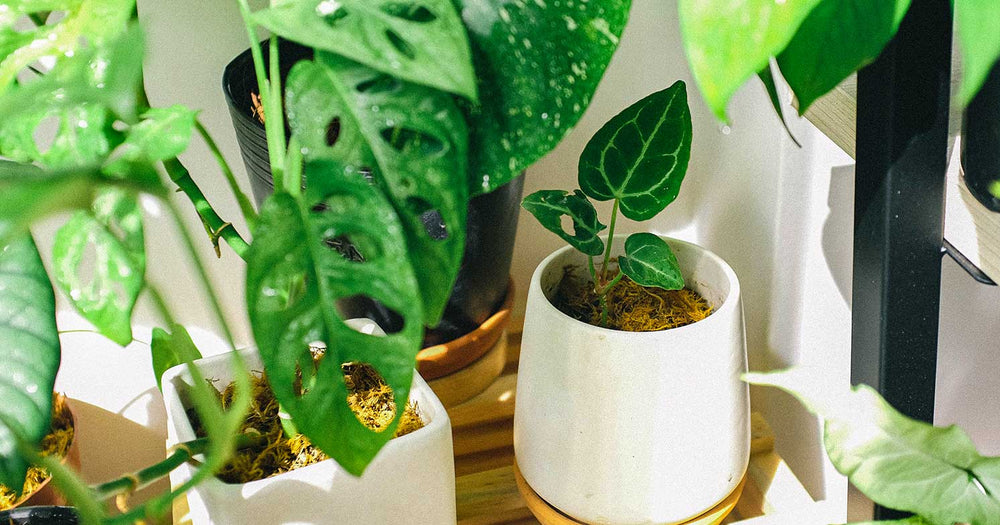Poor indoor air quality can lead to a host of health problems. A variety of chemicals affect the quality of your indoor air, such as carbon monoxide, ozone, radon, and volatile organic compounds.
Don't forget the biological particles, such as fungi and pollen. That's why you need a few air-purifying plants for your home.
You might not even realize that you’re suffering from symptoms caused by poor air quality. Symptoms are often mistaken for other illnesses. A few problems you might suffer from if you have an air quality problem include:
- Coughing
- Sneezing
- Fatigue
- Dizziness
- Headaches
- Upper Respiratory Congestion
If you want to help improve your indoor air quality, in addition to a high quality air purifier, consider placing a few air-purifying plants in your home. Plants are known for helping with air purification because they help to filter out the toxins floating in the air.
10 Air-Purifying Plants for Your Home
1. Aloe Vera
Everyone knows that aloe vera can be used to treat burns, but not everyone knows it is excellent at filtering indoor air. Plus, it's nontoxic for kids and animals, as well as being very easy to maintain. What more reasons do you need to keep a few aloe vera plants in your home?
Aloe vera contains a liquid full of vitamins, amino acids, enzymes, and other compounds that can help to heal wounds. It also contains antibacterial and anti-inflammatory properties. When used to help clear the air, we know that aloe vera removes formaldehyde from the air.
2. Spider Plants
Spider plants are one of the easiest houseplants to grow, so they’re perfect for beginners or those who happen to forget to water their plants. It happens! You need to keep spider plants away from bright and indirect sunlight.
When grown properly, spider plants send out shoots with flowers that will turn into smaller spider plants. Best of all, we know that spider plants can remove xylene and formaldehyde from the air.
3. Peace Lily
Many people have peace lilies in their house. This plant produces emerald-green leaves and large, white blooms, so it’s a lovely plant to keep somewhere that friends and family can enjoy. Be aware that these flowers can add pollen and floral scents to the air, so you might want to avoid having too many in a room.
We also know that peace lilies can remove harsh chemical pollutants in the air that you might have from paint or household cleaners. Peace lily plants can remove ammonia, benzene, formaldehyde, and trichloroethylene.
4. Bamboo Palm
Bamboo palm is known for being invasive when planted outside, but it does well inside a pot. It prefers areas that are shaded or not in direct sunlight, so they can be placed in your kitchen, living room, or bedrooms.
Remember that bamboo palms need frequent watering, but they can be overwatered, so beware. Otherwise, they're relatively easy to keep in your home. Bamboo palm acts not only as a decorative piece, but it also helps to purify the air in the room.
Bamboo palms are a rockstar at filtering formaldehyde, benzene, and trichloroethylene. They can filter so much air because these trees grow to be 4-12 feet tall, so they can remove a lot from the air!
5. Spearmint

Mint, no matter the kind, are a favorite for gardeners everywhere. You can grow spearmint in backyards and pots throughout your home. In fact, it's often better to grow spearmint in pots because it has an invasive nature, growing wildly. Spearmint features air purification properties, plus it spreads a lovely scent throughout your house.
6. Jasmine
Not only does jasmine clean up air quality, but it also is one of the most beautiful smelling plants you can keep in your home. Jasmine features bright green leaves with small blooms that open in the evening. You can use jasmine as a natural air purifier and odor neutralizer, plus you can make some delicious jasmine tea with it!
7. Dracaena
This plant comes in more than 40 different varieties, and all of them are toxic to cats and dogs when eaten. Dracaena removes benzene, formaldehyde, xylene, and trichloroethylene from the indoor air. It has typical foliage with long, broad leaves with lines of white or red.
8. Lavender
Who doesn’t love lavender? It’s one of the most popular herbs that you can grow inside and outside. Lavender has dozens of uses, such as air-purifying, relaxation, and acting as a natural insect repellent among other natural medical use cases. Keeping lavender in your bedroom helps those who suffer from anxiety or sleep issues, while also cleaning the air.
9. Geranium
We know that geraniums have many great benefits, plus they’re beautiful when blooming. For new gardeners, geraniums require very little care. They can live up to two weeks without water and survive throughout colder weather.
10. Ficus/Weeping Fig
Ficus is a tree that is native to Southeast Asia that is hardy and grows between two and 10 feet tall. It’s a rather low-maintenance houseplant with indirect light. Make sure you let the soil dry out between watering.
Ficus is known for its powerful air cleaning abilities that can remove benzene, formaldehyde, and trichloroethylene. While it does have powerful air-cleaning abilities, you can take it outside in the late spring when the temperatures are warmer. Ficus trees look lovely on a patio!
Final Thoughts
Cleaning up your indoor air can contribute to improving your health. You can experience fewer illnesses and feel overall better with cleaner air. To help clean up your air quality, try adding a few air-purifying plants to your home.



